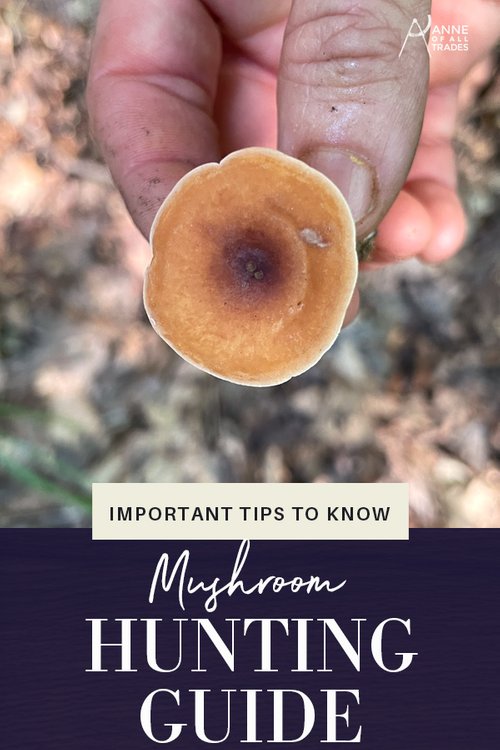Mushroom Hunting Tips for Beginners
Learn these basic safety measures when mushroom hunting. It’s important to know these tips to keep you safe, and to help you have a successful hunt. Remember- When in doubt, Throw it OUT!
Hygrophorus Milky- Lactarius Hygrophoroides (a species of Milk Caps)- Edible
I had chanterelle mushrooms for the first time at my sister’s house seven years ago. She told me she’d found them in the woods. Every time I went in the woods after that, I found myself scanning the forest floor for chanterelles. But I never found any, because I hadn’t yet given my brain enough information to know what to “look for.”
It wasn’t until I’d looked at dozens of pictures of chanterelles online, learned about the different species, their favorite hiding spots, and *when and *where I should be looking.
“The woods” wasn’t specific enough. “On north facing slopes, right after a rain in September, near the roots of broadleaf deciduous trees, such as beech and oak” got me a lot closer. And then once I’d found my first one “in the wild,” I suddenly started seeing them EVERYWHERE.
mushroom hunting tips
Safety First
Not all mushrooms are edible. There are several species mushrooms that vary in toxicity from giving a mild stomach ache to causing death if ingested. Never eat a mushroom you aren’t sure about.
Yellow Chanterelle - Cantharellus Appalachiensis- Edible
Find a Guide
A physical book with high resolution photos that you can take with you into the woods for identifying purposes is a huge asset because even though there are some great mushroom identifying apps (I use PictureMushroom), a lot of the information there is user generated and we’re relying on robots to correlate unrelated photographs, so, as usual, don’t believe everything the internet tells you.
Plus, I don’t always get internet service in the woods. A human guide who has a lot of experience in the forests you’re foraging is another great resource. I’ve found it really helps to walk the woods with someone who can help me identify plant species, weather patterns, and knows the local habits of various mushroom species can help me shortcut the learning curve of trying to figure that stuff out on my own phenomenally well.
Get a Compass
This is wise not just for safety’s sake and not getting lost in the woods, (I can personally attest that it is very easy to get lost in the woods when you’re staring at the ground looking for mushrooms and following mushroom trails instead of walking trails).
Compasses will also help you identify *where* you should be looking. Most mushroom species like to grow in moist, shady spots, which most often occur in spots the sun shines the least (like on north facing slopes).
Lung Oyster -Pleuotus, Edible
Know Your Trees
Often, edible mushrooms will only grow near specific kinds of trees. Chanterelles, for example, grow near beech and oak trees here in TN. Morels love tulip poplar trees, miatake love oak trees. So learning how to identify trees can help you shortcut your mushroom search as well.
Golden Milk-Cap - Lactarius anicola, Edible
Learn Your Terms
Cap- the top of the mushroom (caps come in tons of different shapes and sizes)
Gills- found on the underside of mushroom caps, some are attached to the stalk of the mushroom, some aren’t, and some travel partway down the stock. (Some varieties don’t even have gills!
Stalk- again can be lots of different shapes and sizes, stocks are often used to aid in mushroom identifying. Milk cap mushrooms, for example, have brittle stalks that snap like chalk.
Odor- lots of mushrooms have very specific odors that can help ID them, though be mindful that the odor can change with mushroom age.
Habitat- if you’ve got a head scratcher of a mushroom, take some cues from where you found it to help identify it- which kinds of trees was it growing near? Was it growing out of a piece of wood or in the soil? Etc
Spore Print- this can be a huge aid in identifying your mushrooms, snap off the cap and lay it on a dark surface for 24 hours. This will create a spore print
This is in the Bolete family, but is too old to eat or specifically identify.
Study the Weather Patterns
Each variety of mushroom has a certain climate it thrives in. Chanterelles come in the late spring and early fall, blooming when temperatures start falling below 70 degrees at night. They stop coming out when temperatures dip below 50. During dry spells, it’s far less likely to find mushrooms than right after a big rain.
Looking for mushrooms has given me a really fun way to make the best out of forced hikes with friends as well as a great way to unwind after a hard week. I recently even got Adam of No Trades to come chanterelle hunting with me, and he found a huge patch of them. When I asked him how, he said “I’m getting sunburnt. I was looking for shade.” Ahhhh, the great outdoorsman himself :)
Happy hunting my friends, and remember: “when in doubt, throw it out.”
Indigo Milk Cap- Lactarius Indigo, edible, but not the yummiest of the milk caps.












